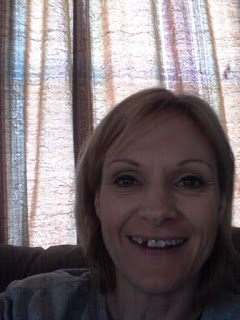Spotting Neonatal Cholestasis Early: A Q&A With Dr. Pamela Valentino
Home Jaundice Treatment Available Due To Funding
Newborn babies cared for by an NHS trust can receive treatment for jaundice in their own homes thanks to new funding.
Traditionally, families have had to take their babies to hospital for treatment.
But after funding from Royal Surrey Charity, a trained healthcare professional from the Royal Surrey NHS Foundation Trust will visit homes equipped with portable phototherapy devices.
Jo Macleod, consultant neonatal nurse at Royal Surrey, said: "We know the toing and froing to hospital disrupts the bonding period for families and can create stress."
Jaundice is a common condition in newborn babies caused by elevated levels of bilirubin, a yellow pigment found naturally in the blood.
While normal for babies to have the condition to some degree, in a very small number of cases it can develop into permanent brain damage and must be treated.
The standard treatment is exposure to light waves, known as phototherapy.
The new at-home phototherapy project is backed by £30,000 of funding from Royal Surrey Charity that was secured through the trust's Bid for Better 2023 initiative.
Ms Macleod added: "Treating jaundice in the home is simple with the right equipment and not only enhances convenience for families but also promotes bonding and reduces the stress associated with hospital visits."
Cognitive Oucome Of Preterm Infants Is Related To Maximal Total Serum Bilirubin
Background: The relation between total serum bilirubin (TSB) and neurodevelopmental outcome in preterm infants is unclear. Free bilirubin (Bf) and the bilirubin/albumin (B/A) ratio may be more reliable predictors of bilirubin neurotoxicity than TSB, but prospective data regarding neurodevelopmental outcome are lacking.
Aim: To determine the relation between TSB, Bf, B/A ratio and neurodevelopmental outcome in preterm infants.
Methods: TSB, Bf, and serum albumin levels were measured in preterm infants of 32 or less weeks of gestation during the first 10 postnatal days. The peroxidase method, was used for Bf. Composite cognitive and motor scores were assessed by the Bayley Scales of Infant Development III at 24 months corrected age. Spearman's correlation coefficient (R) was calculated.
Results: Demographic data are shown in Table 1. Cognitive scores were significantly correlated to maximal TSB, but not to mean TSB levels (R= -0.32 (p< 0.05). Maximal and mean B/A ratios were not significantly correlated to cognitive scores (R=-0.28 and -0.17, resp.) Maximal and mean Bf measurements did not correlate with cognitive scores (R = -0.14 and -0.1, resp.). Motor scores did not correlate with any of the bilirubin parameters.
Table 1
Table 1 Demographic, bilirubin and outcome dataConclusion: Cognitive, and not motor outcome, is only related to maximal TSB levels in preterm infants of 32 or less weeks of gestation. Neither B/A ratios nor free bilirubin levels are related to outcome.
432 Effect Of Infants' Position On Serum Bilirubin Level During Concentional Phototherapy
Background: Alternating exposure of front and back of infants during phototherapy is widely practiced.
Aim: Compare rate of decline in total serum bilirubin concentration (TSB) during phototherapy in infants treated in supine position throughout versus infants alternating between supine and prone position every 3 h. Further, survey current practice in two Scandinavian countries.
Methods: 112 infants with gestational age above 32 weeks, healthy except for non-haemolytic hyperbilirubinaemia, were randomised to one of the treatment groups. TSB was measured at start-up and after 12 and 24 h of therapy. Transcutaneous bilirubin concentration (TcB) was measured midsternum in a subgroup of 10 infants including both groups. A questionnaire about routines for position changes during phototherapy was send to all 41 neonatal departments in Denmark and Norway.
Results: No significant differences in decline of TSB were observed between the two treatment groups: After 12 h of therapy TSB had decreased 32% in both groups and after 24 h 49% and 50%, respectively. TcB decreased rapidly during the first 150 min of treatment and approached a plateau at 35% of the initial level. In two thirds of Danish and Norwegian departments infants were routinely turned during phototherapy, most often every 3rd h.
Conclusion: No difference in the decrease of TSB was observed wheather the infants were turned during phtotherapy or treated in supine position throughout. An explanation for this lack of effect of turning infants might be that photobilirubins are mainly produced in the intravascular space. Alternating exposure during phototherapy is widely practiced in Scandinavia.



Comments
Post a Comment